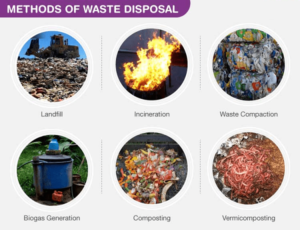Output devices- Output devices are hardware components of a computer system that present or display data processed by the computer. These devices take electronic data and convert it into a human-readable form, enabling users to perceive the output generated by the computer. Some common output devices include:
- Monitor/Display: This is perhaps the most common output device, used to visually present text, graphics, and video generated by the computer.
- Printer: Printers produce hard copies of digital documents. There are various types of printers available, including inkjet, laser, and dot matrix printers.
- Speakers: These output devices produce audio output from the computer, allowing users to hear sounds, music, and other audio generated by software applications.
- Projector: Projectors display computer output onto a larger screen or surface, typically used for presentations, movies, or large-scale displays.
- Headphones: Similar to speakers, headphones provide audio output but in a more private manner, typically used when users don’t want to disturb others or need a more immersive audio experience.
- Plotter: Plotters are used to produce high-quality graphics, often used in engineering, architecture, and design applications to produce large-scale prints with precise detail.
- Touchscreen: Touchscreen displays not only present visual output but also allow users to interact directly with the screen, enabling touch-based input as well.
- Braille Embosser: This device converts digital text into Braille, providing output for visually impaired users.
- Haptic Feedback Devices: These devices provide tactile feedback, such as vibrations or force feedback, to users interacting with virtual environments or simulations.
- LED/LCD/LFD Screens: These are specialized types of displays commonly used for digital signage, advertising, and information display in public spaces.
- 3D Printer: While not as common as regular printers, 3D printers are output devices that can create three-dimensional objects by depositing material layer by layer according to a digital design.
These are just a few examples of output devices, and there are many other specialized devices catering to specific needs or industries. The choice of output device depends on the intended use, required functionality, and user preferences.
What is Required Output devices
“Required output devices” typically refers to the output devices necessary for specific tasks or applications. The term “required” implies that these devices are essential for the proper functioning or completion of a particular process or activity. The specific required output devices can vary depending on the context, but here are a few examples:
- Monitor/Display: In most computing environments, a monitor or display is essential for users to visually interact with the computer system. It’s required for tasks ranging from word processing and web browsing to graphic design and video editing.
- Printer: In offices, businesses, and educational institutions, printers are often required for producing hard copies of documents, reports, presentations, and other materials.
- Speakers/Headphones: For multimedia applications, entertainment, and communication, audio output devices such as speakers or headphones are required to hear sounds, music, voice calls, or other auditory cues generated by the computer.
- Touchscreen: In environments where touch-based interaction is necessary or preferred, such as kiosks, point-of-sale systems, and interactive displays, touchscreen monitors or panels may be required for user input and feedback.
- Plotter: In engineering, architecture, and design fields, plotters may be required for producing large-scale prints, diagrams, schematics, and technical drawings with high precision and detail.
- Braille Embosser: For accessibility purposes, in environments catering to visually impaired individuals, a Braille embosser may be required to provide output in Braille format.
- Haptic Feedback Devices: In virtual reality (VR) or augmented reality (AR) applications, haptic feedback devices may be required to provide users with tactile sensations, enhancing the immersive experience and providing feedback during interactions.
- 3D Printer: In industries such as manufacturing, prototyping, product design, and healthcare, 3D printers may be required for producing physical prototypes, custom parts, medical implants, or models based on digital designs.
The specific set of required output devices will depend on factors such as the nature of the task or application, user requirements, accessibility considerations, and industry standards.
Who is Required Output devices
“Output devices” refers to a category of hardware components used in computing. They are not individuals but rather physical devices that interact with a computer system to present or display data processed by the computer. These devices take electronic data and convert it into a human-readable form, allowing users to perceive the output generated by the computer. Examples of output devices include monitors/displays, printers, speakers, headphones, plotters, projectors, and more. Each of these devices serves a specific purpose in providing output from the computer to the user.
When is Required Output devices

“Required output devices” isn’t a specific event or time frame. It’s a term that describes the output devices necessary for specific tasks or applications at any given time. The requirement for output devices depends on the context of use. For instance:
- In an office environment, printers and monitors are typically required for day-to-day operations.
- During a presentation, a projector or large screen might be required to display visuals to an audience.
- In a multimedia production studio, high-quality speakers and monitors are necessary for accurate sound and video monitoring.
- In a manufacturing facility, 3D printers or industrial plotters might be required for prototyping and production.
The need for output devices arises depending on the tasks being performed, the industry, and the specific requirements of the users or systems involved.
Where is Required Output devices
“Required output devices” aren’t located in a specific physical place; rather, they are components that are incorporated into various computing systems depending on the needs of the users and the tasks being performed. These output devices can be found wherever they are needed to facilitate human-computer interaction or to produce tangible outputs from digital data.
For example:
- In an office setting, you might find printers, monitors, and speakers distributed throughout workstations and meeting rooms.
- In a classroom, you may find projectors or interactive whiteboards for displaying educational materials.
- In a manufacturing facility, output devices such as industrial plotters or 3D printers might be located in designated production areas.
- In public spaces like airports or train stations, you might encounter digital signage displays serving as output devices for providing information to travelers.
So, the location of required output devices varies greatly depending on the context and the specific needs of the users or applications they serve.
How is Required Output devices
“Required output devices” are utilized in computing systems to present processed data in a usable format to users. The manner in which these output devices are used depends on the specific device and its intended purpose. Here’s how some common output devices are typically used:
- Monitors/Displays: Monitors are used to visually present digital content, including text, images, videos, and graphical user interfaces. Users interact with monitors by viewing and sometimes interacting with the displayed content using input devices like keyboards, mice, or touchscreens.
- Printers: Printers produce hard copies of digital documents, images, or graphics. Users send data to the printer from a computer or other device, and the printer processes the data to create a physical output on paper or other media.
- Speakers/Headphones: These devices produce audio output, allowing users to hear sounds, music, voice recordings, or other audio content generated by the computer. Speakers typically connect to the computer’s audio output port, while headphones provide a more private listening experience.
- Projectors: Projectors display digital content onto a larger screen or surface, typically used for presentations, movie screenings, or large-scale displays. Users connect a projector to a computer or other device and project content onto a surface for viewing by an audience.
- Plotter: Plotters are used to produce high-quality, large-format prints of technical drawings, diagrams, or graphics. They are commonly used in engineering, architecture, and design applications where precision and detail are essential.
- Braille Embosser: Braille embossers translate digital text into Braille characters, providing output in a format accessible to visually impaired users. Users send text to the embosser, which embosses the Braille characters onto paper or other Braille-compatible media.
- Haptic Feedback Devices: Haptic feedback devices provide tactile feedback to users, simulating sensations such as vibrations or pressure. They are commonly used in gaming controllers, virtual reality systems, and other interactive devices to enhance the user experience.
These are just a few examples of how required output devices are used in computing systems. The specific use cases and functionality of output devices can vary depending on the context and the needs of users or applications.
Case Study on Output devices
Integration of Output Devices in an Educational Environment
Background: A prestigious high school aims to enhance its teaching methods by integrating modern technology into classrooms. The school wants to utilize output devices effectively to improve student engagement, foster interactive learning, and facilitate the dissemination of educational materials.
Challenges:
- Traditional teaching methods lack interactivity and fail to cater to diverse learning styles.
- Students’ attention spans are diminishing, necessitating innovative approaches to maintain engagement.
- The school has a limited budget for technology integration and must prioritize cost-effective solutions.
- Teachers require training to effectively leverage output devices for educational purposes.
Solution: The school decides to implement a range of output devices tailored to different educational needs and classroom settings:
- Interactive Whiteboards:
- Installation of interactive whiteboards in each classroom allows teachers to deliver dynamic lessons using multimedia content.
- Teachers can annotate on the whiteboard, incorporate videos and interactive educational software, and engage students in collaborative activities.
- Students can interact directly with the whiteboard, enhancing participation and comprehension.
- Document Cameras:
- Document cameras are deployed to facilitate real-time demonstrations and document sharing.
- Teachers can display physical objects, textbooks, or handwritten notes on the document camera, ensuring all students have a clear view.
- This device encourages hands-on learning and enables teachers to demonstrate experiments or solve problems interactively.
- Classroom Projectors:
- Projectors are installed to display presentations, videos, and educational websites on a large screen.
- Teachers can create visually engaging presentations and deliver multimedia-rich lessons to capture students’ attention.
- Projectors support a variety of input sources, including computers, tablets, and document cameras, ensuring flexibility in content delivery.
- Student Response Systems:
- Student response systems, such as clickers or smartphone apps, are implemented to facilitate formative assessment and gauging student understanding.
- Teachers can pose questions during lessons, and students respond using their devices, providing instant feedback and promoting active participation.
- Data from the response system can inform instructional decisions and identify areas for further clarification or reinforcement.
Outcome:
- Enhanced Student Engagement: The integration of output devices fosters interactive learning experiences, captivating students’ attention and encouraging active participation.
- Improved Learning Outcomes: Visual aids, multimedia content, and interactive activities cater to diverse learning styles, leading to deeper comprehension and retention of course material.
- Cost-Effective Technology Integration: Despite budget constraints, the school maximizes the impact of its investment by strategically selecting and deploying output devices that offer versatile functionality and long-term value.
- Teacher Empowerment: Professional development opportunities enable teachers to harness the full potential of output devices, fostering innovation and creativity in instructional practices.
Conclusion: By leveraging output devices effectively, the high school successfully transforms its classrooms into dynamic learning environments that promote student engagement, collaboration, and academic achievement. The integration of technology enhances teaching effectiveness and prepares students for success in the digital age.
White paper on Output devices
Title: Maximizing Educational Impact: Leveraging Output Devices for Enhanced Learning Experiences
Abstract: In today’s digital age, educational institutions face the challenge of adapting teaching methodologies to meet the needs of diverse learners while fostering engagement and retention. This white paper explores the transformative potential of output devices in educational settings, highlighting their role in creating dynamic and interactive learning environments. By strategically integrating output devices such as interactive whiteboards, document cameras, projectors, and student response systems, educators can enhance student engagement, facilitate comprehension, and improve learning outcomes across various subjects and grade levels.
Introduction: Traditional pedagogical approaches often struggle to captivate students’ attention and accommodate different learning styles. In response, schools are increasingly turning to technology to enhance teaching and learning experiences. Output devices, which present processed data in a human-readable format, play a crucial role in this transformation. By leveraging the capabilities of output devices, educators can create immersive and interactive learning environments that cater to the needs of 21st-century learners.
Section 1: Understanding Output Devices This section provides an overview of various output devices commonly used in educational settings, including:
- Interactive Whiteboards: Exploring the features and benefits of interactive whiteboards for dynamic content delivery and student engagement.
- Document Cameras: Highlighting the versatility of document cameras for real-time demonstrations, document sharing, and hands-on learning.
- Projectors: Discussing the role of projectors in displaying multimedia content, facilitating whole-class instruction, and enhancing visual learning experiences.
- Student Response Systems: Examining the benefits of student response systems for formative assessment, active learning, and immediate feedback.
Section 2: Applications in Education This section explores practical applications of output devices across different subject areas and grade levels, including:
- Mathematics: Demonstrating how interactive whiteboards and document cameras can facilitate problem-solving activities, visualizing mathematical concepts, and engaging students in collaborative learning.
- Science: Illustrating the use of document cameras and projectors for conducting experiments, displaying scientific diagrams, and analyzing data in real-time.
- Language Arts: Exploring how interactive whiteboards and multimedia presentations can support literacy instruction, enhance storytelling, and promote digital literacy skills.
- Social Studies: Discussing the role of projectors and student response systems in delivering multimedia-rich lessons, conducting virtual field trips, and promoting historical inquiry.
Section 3: Best Practices and Implementation Strategies This section offers practical guidance for educators on effectively integrating output devices into instructional practices, including:
- Professional Development: Emphasizing the importance of ongoing training and support for teachers to maximize the potential of output devices in the classroom.
- Curriculum Integration: Providing examples of how output devices can be seamlessly integrated into existing curriculum frameworks to enhance teaching and learning experiences.
- Accessibility Considerations: Addressing the importance of ensuring that output devices are accessible to all students, including those with diverse learning needs or disabilities.
Conclusion: By harnessing the power of output devices, educators can create dynamic, interactive, and inclusive learning environments that empower students to succeed in an increasingly digital world. By embracing innovation and adopting best practices in technology integration, educational institutions can maximize the impact of output devices on student engagement, comprehension, and achievement.
References:
- Johnson, L., Adams Becker, S., Cummins, M., Estrada V., Freeman, A. (2016). NMC Horizon Report: 2016 K-12 Edition. Austin, Texas: The New Media Consortium.
- Hertz, M. B. (2010). Document cameras: Panning for golden ideas. Learning & Leading with Technology, 37(5), 10-13.
- UNESCO (2020). Education in a post-COVID world: Nine ideas for public action. Paris: UNESCO.
By implementing the recommendations outlined in this white paper, educators can unlock the full potential of output devices to create engaging, immersive, and transformative learning experiences for all students.
Industrial Application of Output devices
In industrial settings, output devices play a crucial role in conveying information, facilitating processes, and ensuring efficient operations. Here are some key industrial applications of output devices:
- Human-Machine Interface (HMI) Displays: HMIs serve as the primary interface between operators and industrial machinery or processes. These displays, often comprising touchscreens or monitors, provide real-time data, control options, and visualizations of processes. Operators can monitor production metrics, adjust parameters, and receive alerts or alarms through HMI displays, enhancing situational awareness and enabling quick decision-making.
- Industrial Printers and Labelers: Industrial printers are used for printing labels, barcodes, packaging materials, and documentation in manufacturing and logistics operations. These printers produce high-quality, durable outputs that comply with industry standards and regulatory requirements. Barcoded labels enable automated tracking, inventory management, and product traceability throughout the supply chain.
- Indicator Lights and Alarms: Output devices such as indicator lights, sirens, and alarms provide visual and auditory feedback to operators regarding equipment status, process conditions, or safety hazards. For example, flashing lights or audible alarms may indicate a malfunction, a completed task, or the need for immediate attention, ensuring timely responses and preventing accidents.
- LED/LCD Displays for Process Monitoring: LED or LCD displays are used for visualizing process parameters, production metrics, and equipment status in real-time. These displays can show graphs, charts, and trend analysis to help operators monitor process performance, identify anomalies, and optimize production efficiency. Large-scale displays may be installed in control rooms for centralized monitoring of multiple processes or production lines.
- Digital Signage for Information Display: Digital signage systems are utilized in industrial environments to communicate important messages, safety instructions, training materials, and announcements to employees and visitors. These dynamic displays, often located in common areas or production facilities, enhance communication, promote workplace safety, and facilitate workforce engagement.
- Plotters for Technical Drawings and Blueprints: In engineering, architecture, and design industries, plotters are used to print large-format technical drawings, schematics, and blueprints with precision and accuracy. These outputs serve as reference materials for construction projects, product designs, and quality control inspections, ensuring compliance with specifications and regulatory standards.
- Industrial Cameras and Vision Systems: Output devices such as industrial cameras and vision systems capture images or videos of manufacturing processes, product inspections, and quality control checks. These visual outputs enable automated defect detection, part identification, and measurement, improving product quality and reducing waste in production.
- Actuators for Control Systems: Actuators are output devices that convert electrical signals into mechanical motion to control valves, motors, and other mechanical components in industrial automation systems. These devices regulate flow rates, adjust positions, and perform precise movements based on input commands from sensors or control systems, enabling automated process control and optimization.
In summary, output devices play diverse roles in industrial applications, ranging from providing real-time data visualization and control to facilitating communication, safety monitoring, and quality assurance. By leveraging output devices effectively, industrial organizations can enhance productivity, streamline operations, and maintain a competitive edge in today’s fast-paced manufacturing environment.





